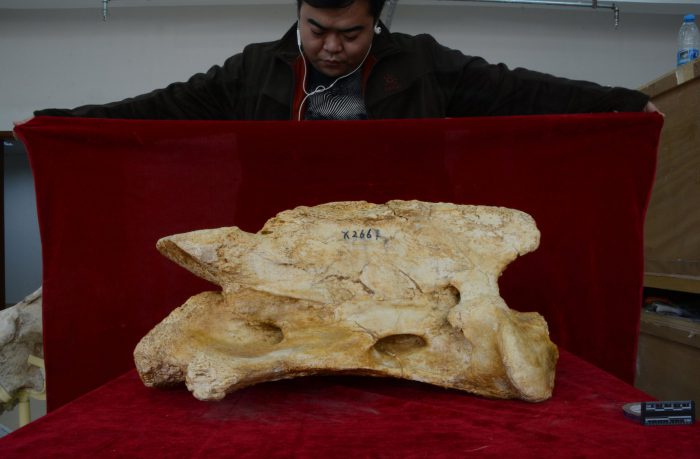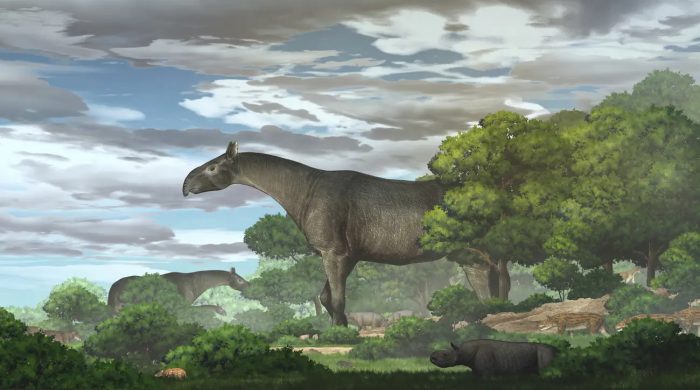When you hear the word 'mammal', what is the first creature that comes to mind?
A dog? Cat? Bear? Squirrel? Panda? Cow? Fox?
On the surface, all mammals seem to have a lot of common characteristics, right? Fur. Four legs. Land-based. But after you stop to think about it some more, the true diversity of mammals bursts forward. Mammals like dolphins and whales conquer the seas. Mammals like bats fly. And there is a certain two-legged mammal species that builds cities, makes art, and speaks in complex languages (that's us!).
Then there is the rhinoceros. Their thick armour-like skin feels almost reptilian. And then there's that horn, which reminds us of horned dinosaurs like Monoclonius. And as some of the largest mammals on the planet, their size feels dinosaur-like, too. And if you think today's rhinos are a handful ...
Researchers have now claimed that a new fossil is the skull of a giant prehistoric rhino. Called Paraceratherium linxiaense, it is the sixth species in a group of hornless rhinos that roamed the Earth 26.5 million years ago. And it may have been the largest of its kind.
Who were the giant rhinos?
Modern rhinoceros are much different than their prehistoric ancestors. (Getty Embed)
Rhinoceros' today are stocky animals a bit bigger that a polar bear. But in prehistoric times, they were absolutely enormous animals. The largest rhino species—belonging to the group Paraceratherium—were as tall as a giraffe (about 4.8 meters or 15.7 feet tall). But where a giraffe's height is mostly in its neck, these ancient animals had huge bodies and likely weighed as much as three to five African elephants (the heaviest land mammal in the world today).
Despite this huge size, giant prehistoric rhinos had much sleeker bodies than modern rhinos. Instead of being stocky, they had legs that were almost horse-like. Their exceptional height would've allowed them to feed on the leaves of trees. They had no horns, but they likely wouldn't have needed them for protection—their overall size would've made them a very difficult animal for predators to attack.
Absolutely incredi-skull

That is one enormous skull! (Deng Tao)
Scientists have actually known about Paraceratherium species for a while now. So why is this new fossil so interesting?
For one, thanks to DNA analysis, researchers are confident that it is of a brand new species. Then there's the fact that finding a complete skull and jaw is really rare—definitely not something you see everyday!
And finally, it appears that P. linxiaense would have been the largest rhino ever known. Even though scientists don't have the rest of its skeleton to go off of, they can make guesses by comparing the size of certain parts of what they have to the fossils of similar species.
Will paleontologists ever find a complete P. linxiaense? Here's hoping that they do! Even though the largest prehistoric mammals were still smaller than the biggest dinosaurs, fossils like this remind us of just how surprising mammals can be!
 An artist's illustration of Paraceratherium linxiaense. (Chen Yu/Institute of Vertebrate Paleontology and Paleoanthropology)
An artist's illustration of Paraceratherium linxiaense. (Chen Yu/Institute of Vertebrate Paleontology and Paleoanthropology)









